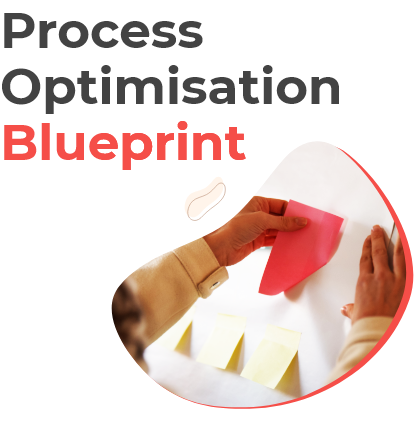Business Process Reengineering Strategy for Professional Services
Business process reengineering strategy is a powerful approach to improve the efficiency, effectiveness and customer satisfaction of business processes.
Business process reengineering strategy has been successfully deployed in many other industries and now it’s time for professional services industry to reap its benefits. Businesses that are looking for ways to increase their productivity should take this opportunity seriously.

The need for Business Process Reengineering Strategy
Business process reengineering is defined as “a systematic approach to improving the effectiveness and efficiency of organisational processes by analysing them, understanding their current performance levels or limitations, developing alternative strategies for improvement, selecting a strategy-set that best addresses those process weaknesses (or desired outcomes).
Business process reengineering is a strategy that has been used for decades in many different industries with the goal of improving organisational effectiveness.
Professional services industry, such as, accounting, audit, and so on has now embraced this strategy with the hope that it will help them maintain and grow their competitive edge in this ever evolving global economy.
Interesting Read: Applying Six Sigma in The Service Industry – Accounting and Audit
Ultimately, this strategy is about removing the impediments to a process so that it can be improved, and then repeating this cycle of improvement over and over again. Business process reengineering is not just about changing what you do; rather, it’s about optimising how you do things—and in particular, by fundamentally shifting your view of the task at hand.
The three phases of BPR – the pre-phase, the phase, and the post-phase
Business process reengineering (BPR) is commonly divided into three phases: the pre-phase, the phase, and the post-phase.
The pre-phase
The first phase of BPR is about preparing for change; doing research on your processes to find out where you can improve them or remove redundancies. It also involves understanding what will happen when a new process starts, in order to make it easier for people who are transitioning to the new process.
In an accounting firm setting, an example might be looking at different ways to simplify the process for new clients.
The goal should always remain maximising value for the clients – and the process should be something they are willing to put the effort into.
The phase
This is where you start implementing your changes and streamlining processes, which could include training staff on how to do their jobs differently or automating some functions that have previously been done by hand.
This can be a difficult time for people who are uncomfortable with change – especially if they don’t believe in change.

Change is not always easy to accept. You can use this time to offer training and coaching on the new process. If people are worried about change, admit that it won’t be easy but urge them to give it a try for themselves. You might reassure staff with some positive feedback – they may not recognise all their hard work in order to make changes happen quickly enough.
The post-phase
BPR can take a while, and it is important that after implementing changes in one phase you continue with more work on other phases. Businesses will typically revisit their BPR strategy every few years but for some firms this may need to happen more early.
It’s important that you evaluate the business process Reengineering activities you have implemented.
This evaluation process should identify the strengths and weaknesses of your business process reengineering strategy, any problems that may be arising in its implementation or what improvements could be made to it.
The post-phase is also an opportunity to assess whether all the benefits anticipated from BPR were achieved successfully.
Traditional vs. Reengineered Process
What is the difference between traditional vs reengineered process you may ask. As an example, traditional business process of an accounting firm might be:
– Business development prospecting
– Lead qualification, and
– Presentation of proposal.
This process will be followed by the client saying yes or no to the offer. This is a traditional business process that many accounting firms have because it has been in place for decades with no change.

When you apply process reengineering to said process, where you can install continuous improvement and design business processes to achieve its optimal level of performance, you will find that this process can be redesigned.
A reengineered business processes more of an iterative approach to the design and implementation phases.
The key difference between these two approaches in that example is that the processes to achieve dramatic results is iterative, and not linear.
This concept might still be hard to grasp, but the important thing is that you have start your BPR initiatives steps by reading this article.
The Business Process Reengineering (BPR) is a sophisticated methodology for implementing organisational changes.
This process ensures that you’re always looking to improve your business processes by maximising their efficiency and effectiveness as well as reducing the cost of operations, people’s time spent on them, and so forth.
If you want to know more about this, wait for our next articles!
Are you tired of…Messy, manual processes that can't be scaled?
We work with operations leaders looking to digitally transform their manual back-office processes and procedures.
We combine your existing business processes with our software, plus decades of enterprise process re-engineering and change management experience to quickly scale and see the results you are looking for.





